At least squirrels work in daylight, such that it is easily observed if they’re chewing and stealing your produce. But rats! Nocturnal, sneaky, fecund, voracious. How to protect your garden fruits and vegetables from them?
There are no rats doing damage among my vegetables or fruit trees these days because I have skilled hunter cats that spend all night patrolling the yard. So that’s my first recommended line of defense, if that is an option in your situation. (See my post, “Cats: garden defenders.”)
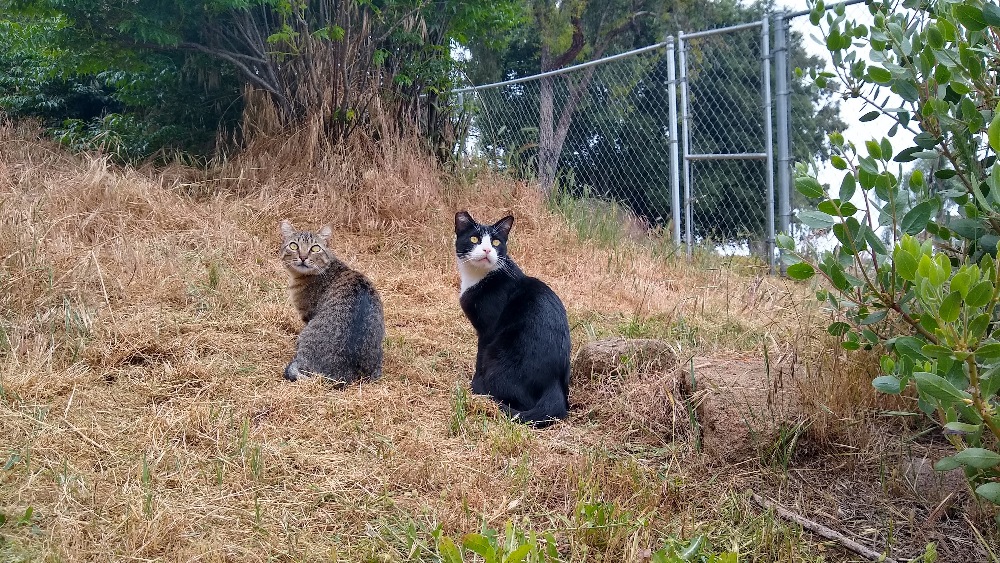
But there have been times when I did not have such helpful cats and I had to fight rats more directly. At those times, I took a three-pronged approach: kill, reduce hospitality and habitat, and protect.
Kill
One, I killed rats using the classic Victor snap traps. I used cashew nuts as bait, but I’ve heard of others using almonds with success. It seems helpful to scratch the nut or break it in half before you attach it to the trap so that it is aromatic. That’s what I always did, anyway.
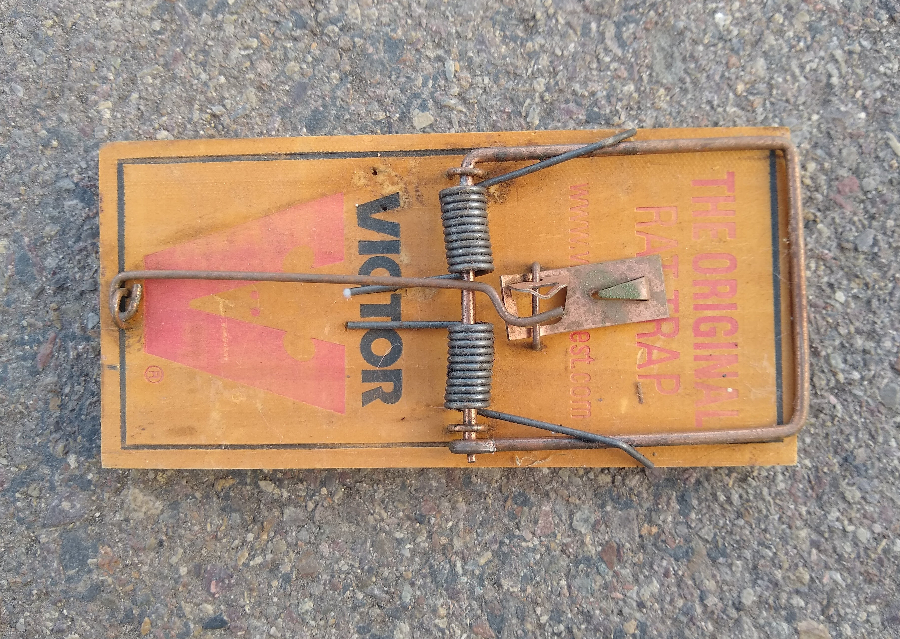
Reduce hospitality and habitat
Two, I made sure not to provide food for the rats in the form of leftover pet food or chicken feed or open compost piles or fallen fruit left on the ground under trees. All such attractive foods must be cleaned up and sealed in buckets, or enclosed otherwise, especially overnight. Be not hospitable to those rodents.
Also, I reduced habitat and hiding places for rats. Thick vines such as passion fruit or fig or trumpet vine (distictis), or ivy or periwinkle, in a yard are invitations for rats to travel through and live in. Such vines must be thinned or even removed.
I had a trumpet vine on an arbor at my previous garden that was infested with rats until I thinned it severely. My mom had a fig vine covering a wall that was infested with rats; the population was more easily reduced with traps once the vine was cut way back.
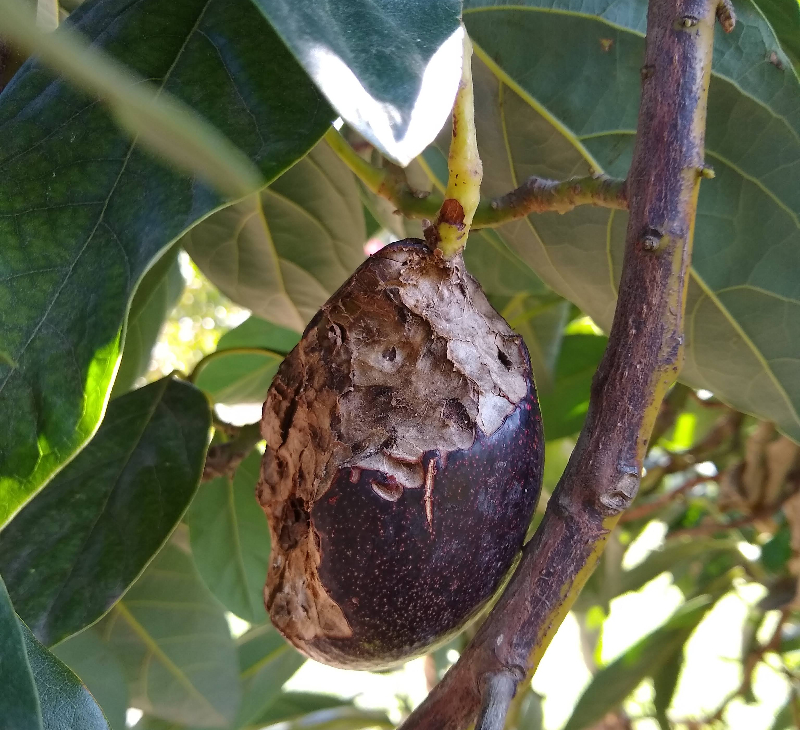
Rats like to travel under cover. They don’t want to be on top of a wall or running across bare ground. They utilize bushes or other dense foliage and fences that are covered with plants whenever possible.
Protect
Three, I protected my fruit in various ways. There are cages you can make, and I’ve been lucky enough to meet some genius gardeners who design and fabricate unique and effective versions out of plastic and metal for different crops. For example . . .
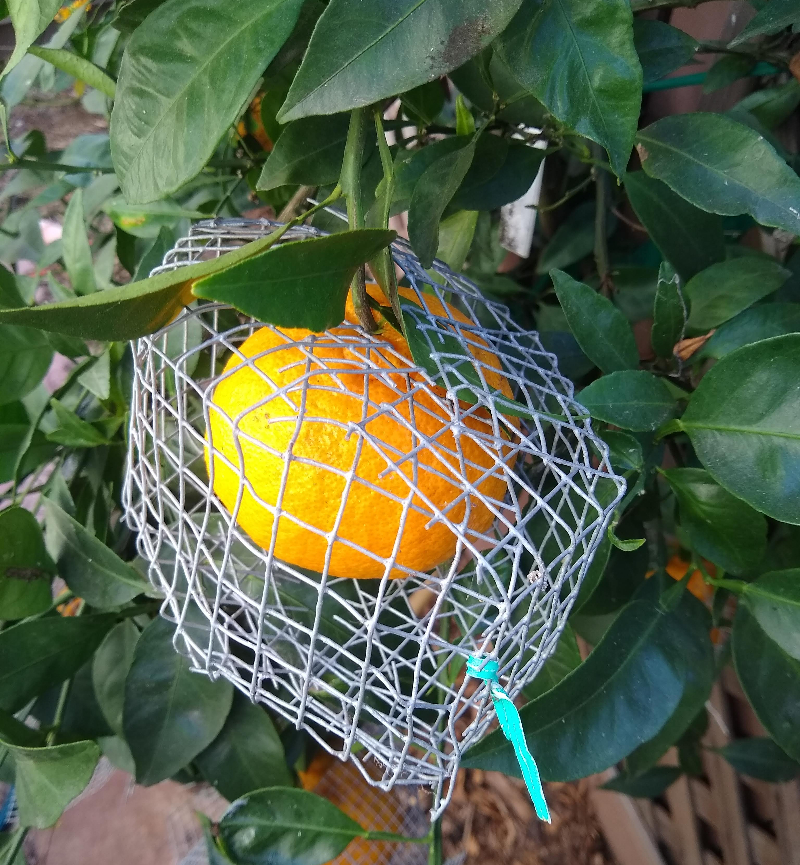
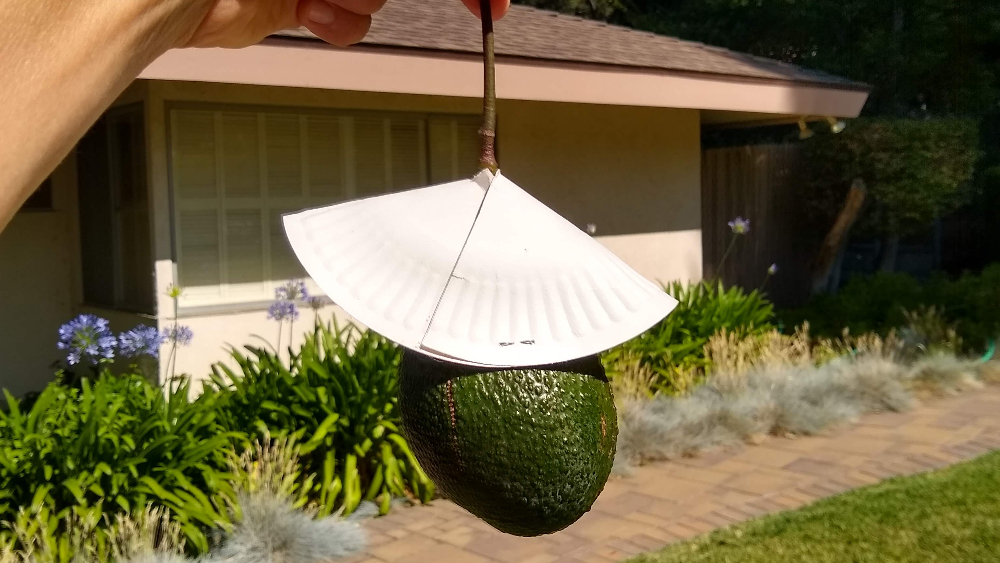
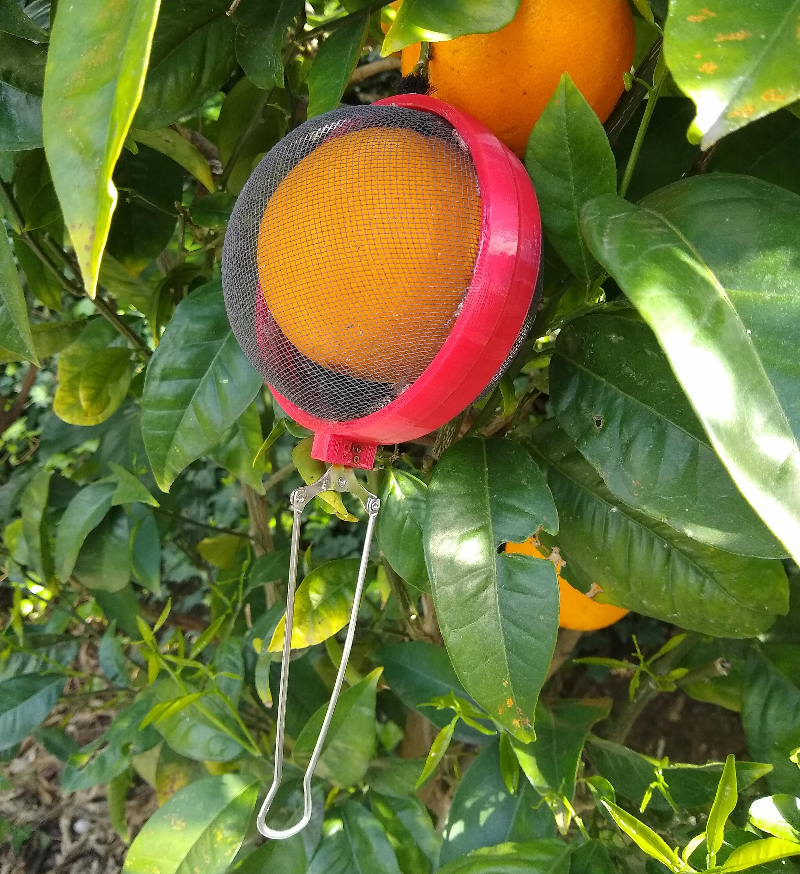
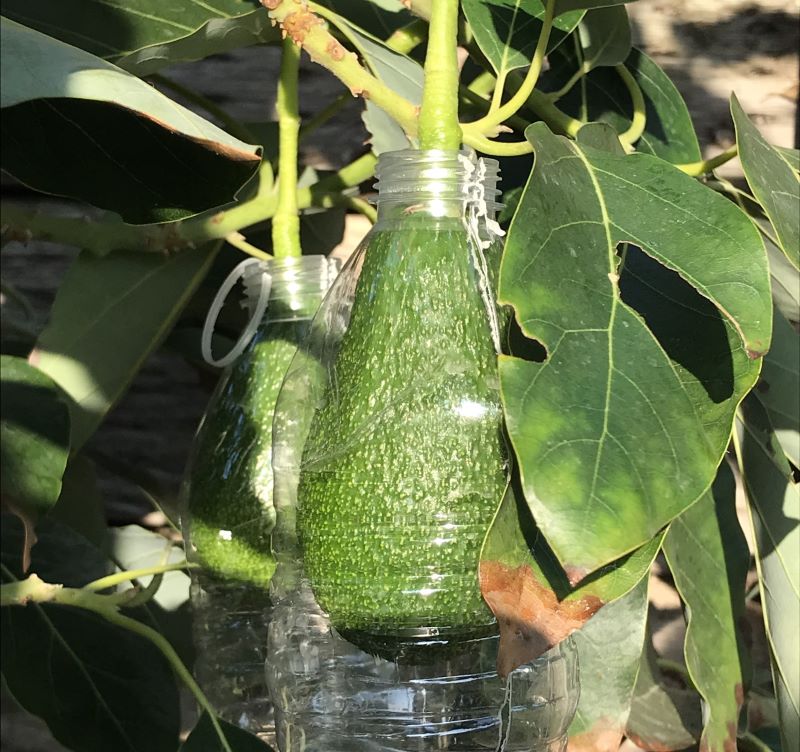
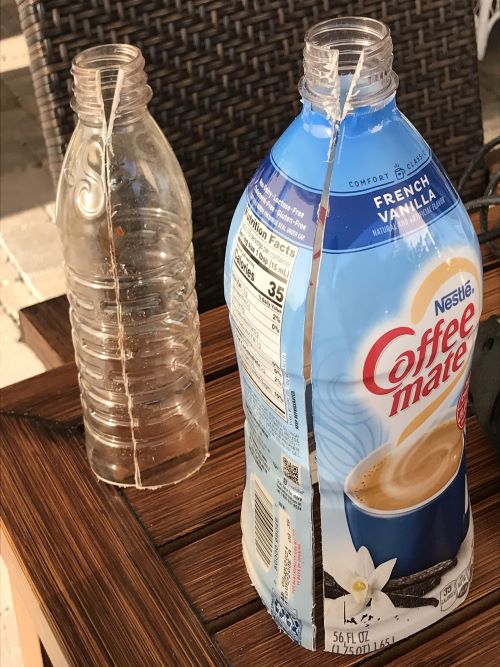
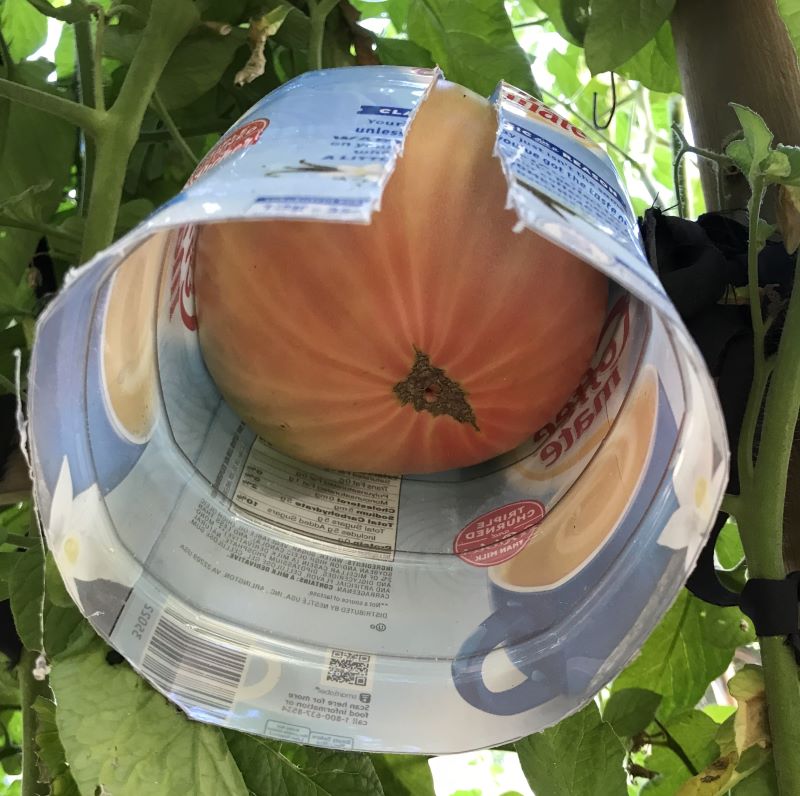
A simpler version of this is to use a plastic clamshell over the tomato.
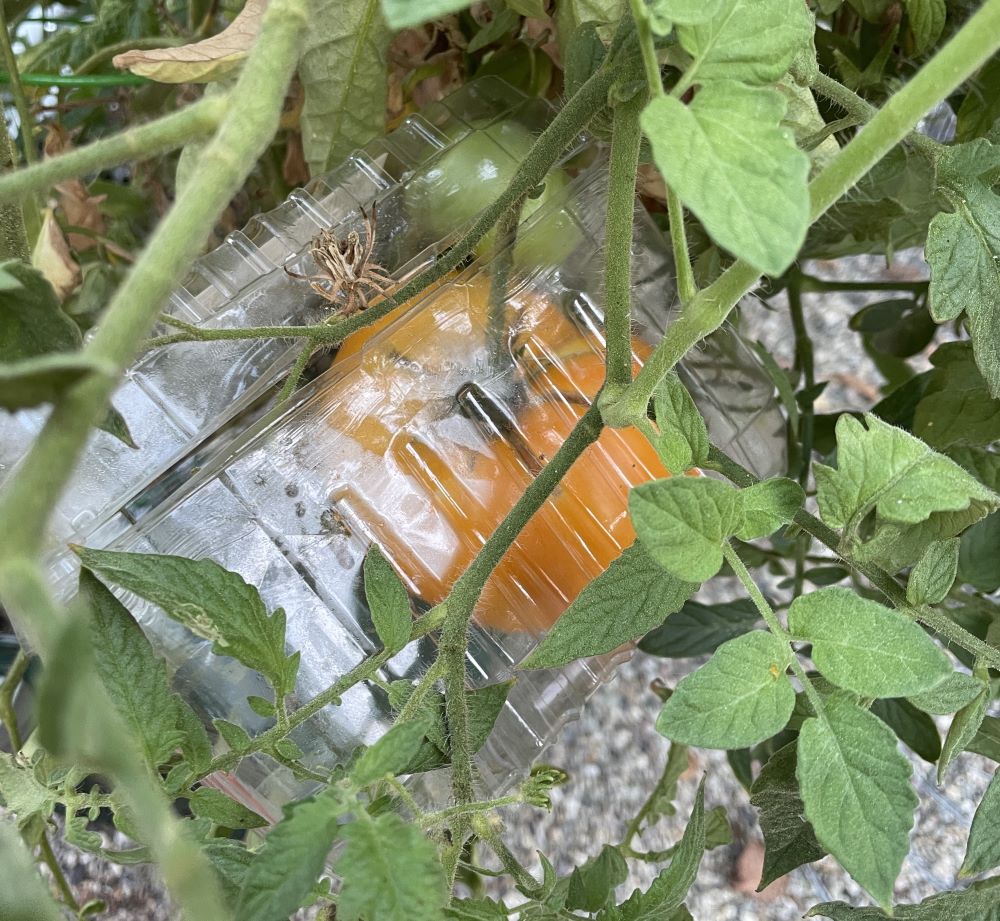
Tomatoes
Also for tomatoes, if I hadn’t protected them, as soon as the color turned from green to light orange, I harvested and let them ripen in the kitchen. (Tomatoes ripen well and taste good as long as their picked after color “break”.) This saved some tomatoes but certainly not all, such as this one:
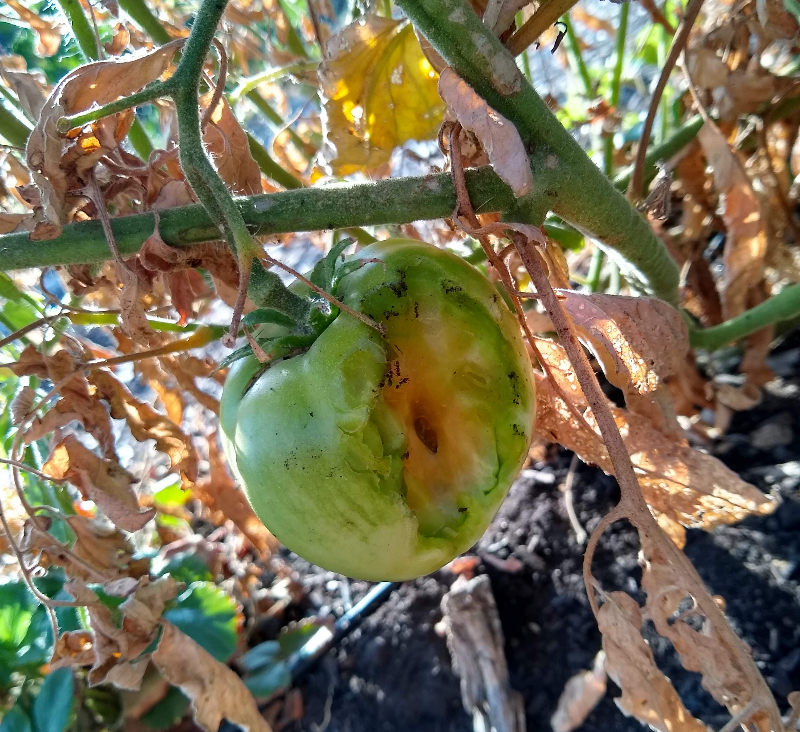
At times when I didn’t have hunter cats, I did all of the above but still had some losses to rats. I never eliminated their damage. But I did reduce it.
Do you have additional experience? Help others get more food, and less rats!
(Art at the top is by my ten-year old son. Thanks, Cass!)
My work on these Yard Posts is supported exclusively by you — not by ads. Thanks!
All Yard Posts are listed HERE




Greg. I’ve also got hunter cats. 🐈🐈They are indoor outdoor but mostly spend the summer nights outdoors. But like it indoors in the winter. But I like them to be out side at sunset which is when the rats appear. My next door neighbor has ivy on their back slope 🐭🐭 I’ve also got an owl box with at least one 🦉that frequents it and leaves pellets. My cats actually eat the rats.
I don’t have a garden, but I do have 3 avo trees, oranges, persimmons, and pomegranates. Oh and lemons, but critters have never bothered those.
By far the most attacked tree is my 10 yr old Hass. I had a string of probably 3 years when the rats were getting there fill of avocados. I had not thought about it, but I could not imagine trying to protect each of the 100-200 fruit with a bottle. What I did do was set Tomcat traps, which are also a type of plastic snap trap. Both on the ground, and on the top fence rail. Both locations were successful in catching rats. I used peanut butter for bait. The tomcat traps have a removable bait cup which is pretty handy, and easy to fill with the PB. Even when it dried out, just add some on top.
It’s been at least two seasons of eating those Hass avos since I’ve had a rat around. I suspect the skunks moving in, which mostly only dig around, are partially to thank for the rats leaving. The skunks will eat fallen avos if left around, and an occasional persimmon, but I no longer see partially eaten avos on the tree. Interestingly, I’ve never had any critter go after my Fuerte. It seemed like a few Reeds went missing this year, but I never saw half eaten ones like a rat or skunk ate part of it.
I have used the paper plate method on the trunk of a tree as a rat guard. It mostly works. I bet metal with a wider diameter would work better, but I would have to make them and am not super motivated to do so. Any Navy guys out there will recognize this as the rat guard in a mooring line.
I’m not entirely sure if I have rats…or if possums are my issue. The avos are found on the ground bitten into or scratched into. Apparently they are too hard to eat right now. But if I leave the fruit there, they come back to nibble on those fallen fruit night after night. I figured if I leave it there they won’t be constantly searching for new fruit victims.
Hi Michelle,
The difference I’ve noticed between rat and possum damage is that rats will chew the fruit while it remains on the tree or vine whereas possums usually eat it on the ground. (I have seen possums in my trees but they seem to do most of their eating on the ground.) Your damage sounds more likely to be from possums, if I had to guess.
I saved my persimmons this year from squirrels & birds, by covering each one with a sock, on my small tree.
Has anyone tried using weaved copper wire and tanglefoot? Our trees are on a hillside on a canyon so cats wouldn’t last long. Traps don’t seem to work well for us – the rats either reproduce quickly or invite friends over!
The first year we planted our garden, we caught 16 rats and a few mice. I removed all the ivy in the yard and cleared a path around the slope retaining wall. The challenge is rats are smart, mice are dumb. I learned to change my trap types and location, Victor wood snap and plastic snap. 3 years ago I started using the Victor execution chamber. I built a simple cover to protect it from water.
3 years ago, we were seeing something odd in our garden. We bought a ring camera and observed more than we expected. Opossum eating the orange on the tree. The peel was empty. We thought it was a nocturnal rat. We are pretty sure the tomatoes we lost 2 weeks ago was by a nocturnal rabbit. Our yard was a coyote freeway, one night we had a mom and 2 pups.
3 years ago we had a young apple tree that was robbed. I installed vertical pigeon spikes with plastic tie wraps, so there was no path climb. This has stopped the thieves.
Squirrels (daytime rats) are a challenge.
My in laws neighbor used exclusion to protect his three large Pinkerton trees from rats. He pruned all growth below three feet and screwed a continuous band of flashing at least three feet long on each main leader. Some of the branches had grown horizontally so he attached large flaps of flashing creating a vertical obstacle. I adopted a version of this technique for my in laws smaller stone fruit trees using 8” or 10” vent pipe from Home Depot. The pipes have a crimped seem that can be opened and re closed. The ends are recessed about 1” into the dirt the rats do not appear to like digging in hard coastal clay. 36” inches seems to be the magic height. I watched footage from my trail camera where several rats failed to bypass the vent cladding and sadly faded back into the night. I wasn’t able to use a single pipe on several trees because the main scaffold branches were too low. I attached multiple pipes with screws and flared them out into a cone shape to make them fit. There are some downsides, the pipes collect debris and fallen fruit. One tree (flavor Grenade pluot) developed bacterial canker on the trunk down in the pipe possibly due to limited air flow. Working with the pipe isn’t the greatest either the edges are razor sharp. The trees must be pruned to stay above the 3 foot mark every year low hanging branches offer an opportunity for the rats to gain access. Hope this helps.
Thanks for this, Chris. Must have been so satisfying to watch the footage of the rats fail to scale the vent cladding!
I use steel metal bags on my avocados. They are about 90 percent effective against rats. It’s a lot of work to bag them but if I don’t the rats would get them all! Can’t have cats as we have coyotes and traps have been ineffectual.
QYfirst Fruit Protection Wire mesh Bags
https://a.co/d/deBLZkf
Thank you, Christine. Another avocado grower in Tustin has told me that these particular bags work for her too.
KILL RATS DEAD WITH CORNBREAD MIX & BAKING SODA
Thank you for this, love all the different solutions! I am stumped as to what ate every single apple (about 20) off my newly planted Anna Apple tree-,they weren’t even ripe yet!! No signs of debris on the ground, nothing!! Our yard seems to be a thoroughfare for critters! Any ideas as to what kind of critter ?
You can get an Outdoor Security Camera, Battery Powered Wireless Camera on Amazon for less than $15 . You would be amazed at what goes on in your yard at night, different animals at different times, better than watching a movie.
I have eight cameras watching over my trees garden and containers, they cost less than $150.
I have many avocado and citrus trees planted for me and not for the benefit of woodland creatures that belong in the woodlands not in urban areas.
That sounds like raccoon. I left a basket of persimmons on the porch overnight and the next day found it empty, not bite of anything left, and orange raccoon poop on some nearby boots. Thankless critters.
Coyotes were eating the persimmons. Breaking branches by climbing the trees and leaping up to bite low hanging persimmons. Many unripe persimmons had fang marks on them.
I cut all branches off that were below 6′.
This year I found only one branch broken off because the ripening persimmons weighed the branch down low enough for the coyotes to be able to leap up and bite persimmons, then pulling and snapping the ranch off.
Everything above 6′ was fine.
Rats were eating ALL of the macadamia nuts.
I cut off any branches below 6′ and eliminated multiple trunks to leave only one trunk.
Then wrapped 20″ wide aluminum roof flashing around the trunk. Placed at about the 5′ height so the rats could not leap from the ground and get above the flashing. Or leap from the trunk out to a branch.
The local hardware store has the flashing in aluminum or galvanized steel. I chose the aluminum since the 50′ roll was alot lighter and and about $25 less expensive than the galvanized steel.
I cut lengths of flashing that would wrap twice around the trunk. Then rolled them by hand so they would almost hold themselves in place. Attached the leading edge with three roofing nails (wide heads so the aluminum would not pull through easily).
Then, to allow for trunk diameter growth: the trailing edge was cut at a slight angle with the longest tip at the top. I poked a hole near the tip where an “S” hook was inserted and a small spring attached and then nailed to the tree with another roofing nail.
This year the macadamia trees are loaded with fully matured nuts, ready for ME to harvest!
Does any one have experience with such a wrapping causing problems with the bark? Should I remove this after the nuts are harvested? Then install again next season?
Rats were eating:
1) lemon flesh from inside the Lisbon and Eureka lemons. Leaving empty skins hanging on the trees.
2) lemon peels from the Improved Meyer lemons. Leaving peeled fruit hanging on the trees.
3) the every single leaf from the Buddha’s Hand citron tree. Leaving the stark naked tree to die.
To save the Buddha’s Hand tree I slipped a 3′ long section of 4″ diameter white plastic drain pipe over the tree. I bunched up the branches and shoved them into the pipe and slid the pipe down into place.
Then poisoned and trapped as many rats as possible to reduce the fruit damage on the Lisbon, Eureka and Improved Meyer lemons.
The Buddha’s Hand tree has survived and grew new leaves. There are three fruits developing on the tree now.
Rats were stripping the tender succulent bark from all the trunk and branches from a young small mulberry tree.
Each year the vigorous mulberry would grow new shoots and eventually these would all get stripped of the bark, killing the branches.
Last year I found a metal trash can with a rusted out bottom, it was tossed into the dumpster at work.
I trimmed out the jagged rusty bottom panel. Put this over the mulberry tree and buried the bottom edge in the soil. This year the new shoots are thriving and the bark is still in place.
Wild rabbits ate the bark from the bottom 6″ of a mature 10″ diameter trunk of a mulberry tree (Phil’s White). Completely girdling the tree. Which will probably kill the tree.
I had previously protected the tree trunk with chicken wire, but had removed it this year thinking the tree was beyond being a victim of the rabbits. Big mistake!
I will shovel dirt onto the trunk, mounding the soil up in hopes that the bottom edge of the existing bark will send roots out and save the mulberry tree.
I should have left the chicken wire in place.
Same issue with loquat trees. Rabbits love loquat bark. So leave the chicken wire wrapped around them also.
Havahart animal traps proved successful for us against rats and opossums. For bait, we threw in some of the fruit off the tree the animals sought — peach, jujube, etc.
We relocated the animals far away.
https://www.havahart.com/store/animal-traps?srsltid=AfmBOorHmG_EPKkFdZdHfy-Nc2oiBcZSAa2KNIAjrmGzh2s4HvnjtvMx
In Tucson we have hungry rabbits, packrats, round-tailed ground squirrels, birds, and figeater beetles. I don’t rely on cats because of the toll they take on songbirds and lizards– to say nothing of the risk to the cats from coyotes, bobcats, and great horned owls. However, I’ve had mixed success using a variety of individual fruit covers and tree cages. Then, in 2024 I built two 11′ high enclosures of 1/2″ PVC-coated galvanized welded wire. One is 25’x25′ and the other is 25’x75′. I finished building them just in time to protect the pawpaws and persimmons, and look forward to harvesting all the figs in 2025. I would post photos but don’t see a way to do it here.